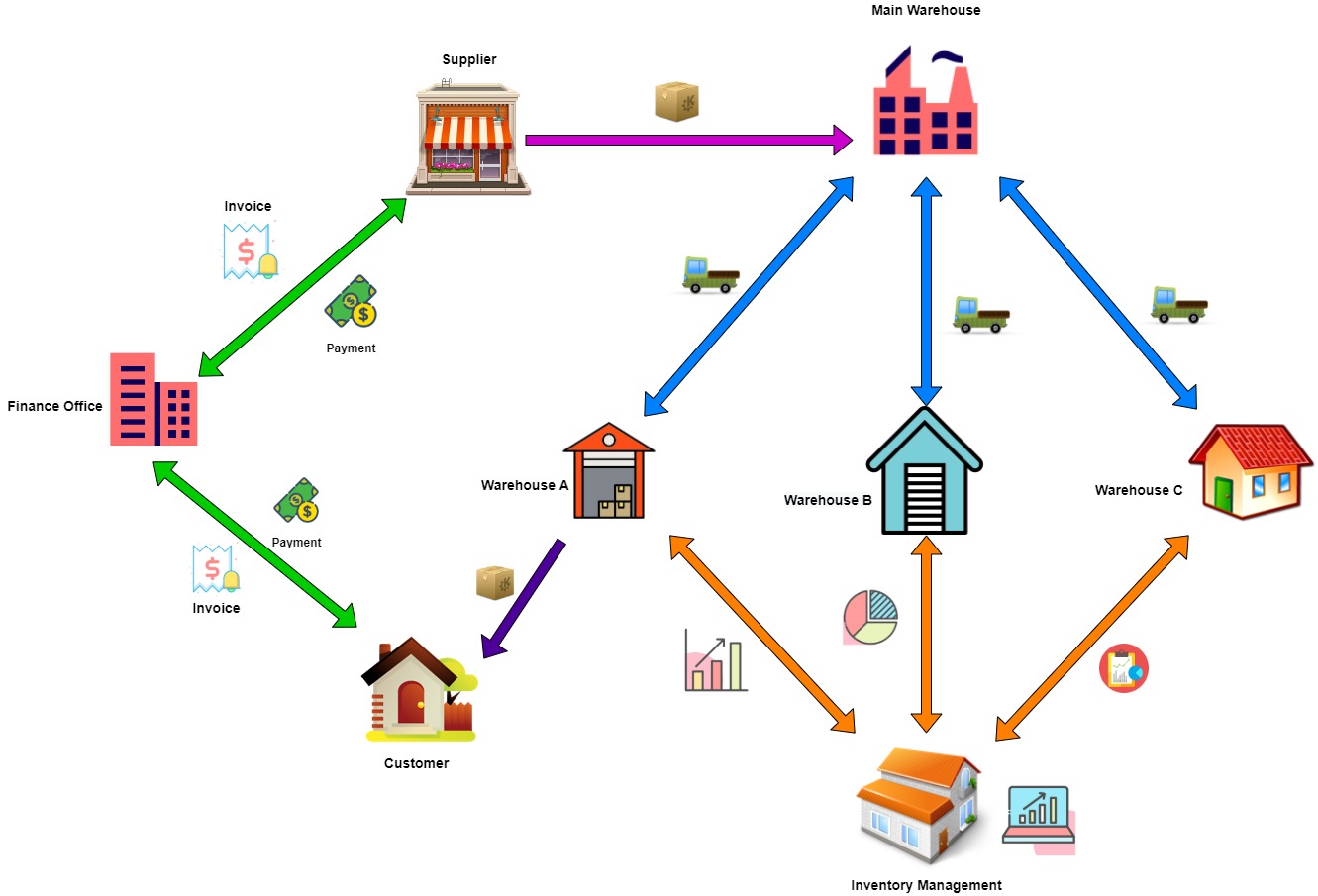
“When services are loosely coupled, a change to one service should not require a change to another.”
― Sam NewmanIntroduction
Microservices architecture enables an organization to evolve its technology stack.The goal is that teams can bring their services to live independent of each other. Microservices reduces all types of dependencies and the complexities around it.
Zoho Creator, a low code platform for custom application development leverages the microservices architecture which allows you to prepare independently deployable components owned by a small team. Any issues in the services can be easy to identify/fix and easy to redeploy as the processes can be very agile.
Use Case
Let us say you have a SME dealing with confectionery. In your business you will have to deal with different services like Shipping items between Multiple warehouses, Inventory management, Accounts/Books Keeping.
Let's assume you have a centralized/primary warehouse where all the stock will be received which acts as a hub for all the other warehouses. The items will be moved from the main warehouse to other warehouses according to the stock availability and the needs of the other warehouses. This will be managed by the logistics team.
Once the items are transferred to the respective warehouses, the stock in each warehouse has to be managed using an inventory management team. This team keeps track of the stock in each warehouse and makes sure that the inventory is always ready for supply and also notifies if the stock is less for a particular item and helps in configuring reorder.
After the inventory is accurately captured, relevant staff can manage the inventory management effectively. Next, the Accounts/Books keeping of the finance team comes into action. This team does all the accounting work like generating invoice, keeping track of the invoice payments, tax filing, and due payments.
All the above teams are separate microservices which work independent of each other. The data can be shared between each team if required. This makes each team independent and makes sure the dependencies are reduced between the services.

Solution Using Zoho Products
This entire process of shipping items from/to the warehouse, Stock keeping/Management, Accounting and Financing can be done by using a simple integration via APIs of supported products. For the specific use case here, below Zoho products are considered:
1.Zoho Creator can take care of the front end of the app interaction with the customer as well as the workflow of the production line in the back end of the application. The app is also mobile/tab/web friendly so that the user can work on the move without any issues.
2.Zoho Inventory takes care of all the materials that are kept in the inventory. This also enables you to manage the stocks in the multiple warehouses, shifting of goods from one warehouse to other, etc.
3.Zoho Books takes care of all the accounting part of the application such as Invoice processing, sale order management, vendor/customers data capture, Tax filing and reports of Balance Sheets/Cash Flow and others.
By combining/integrating these three products together, you will be able to build a microservice that can take care of the business in an efficient and productive way.
The data can also be organized and maintained securely.
Conclusion
Microservice architecture improves productivity by breaking down the application into smaller autonomous fragments. Thus it is making it easier to build and maintain. Continuous integration and continuous delivery are key which gives an agile approach that allows cross-functional teams to work together.Based on the needs of each component, customization will be simple and quick which helps you to improve business operations as well.
